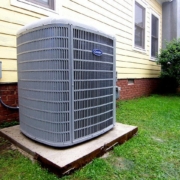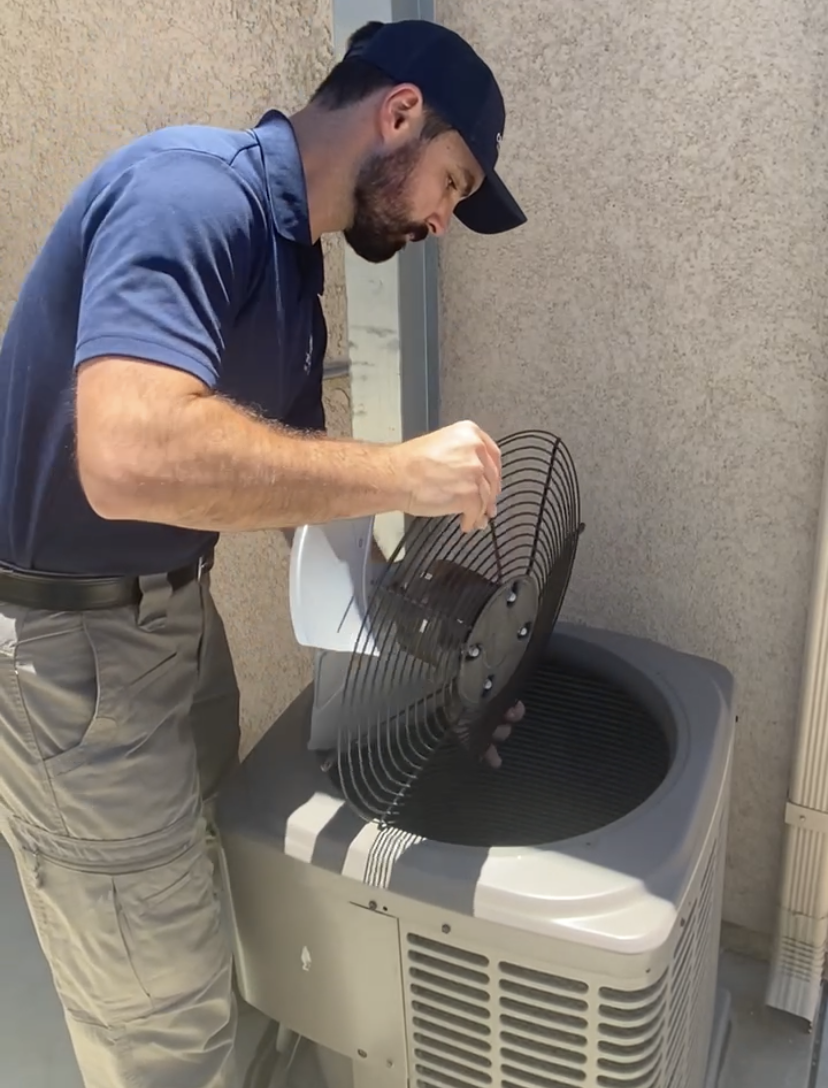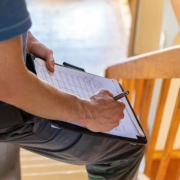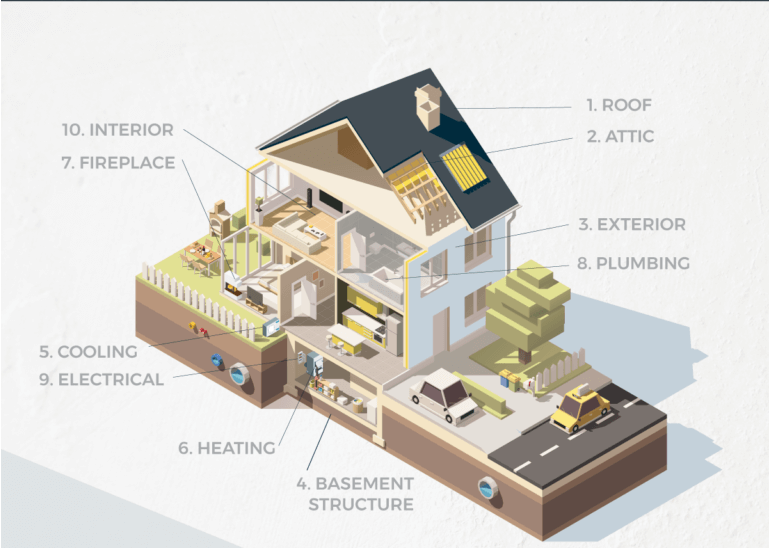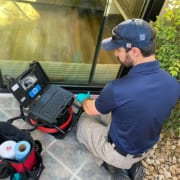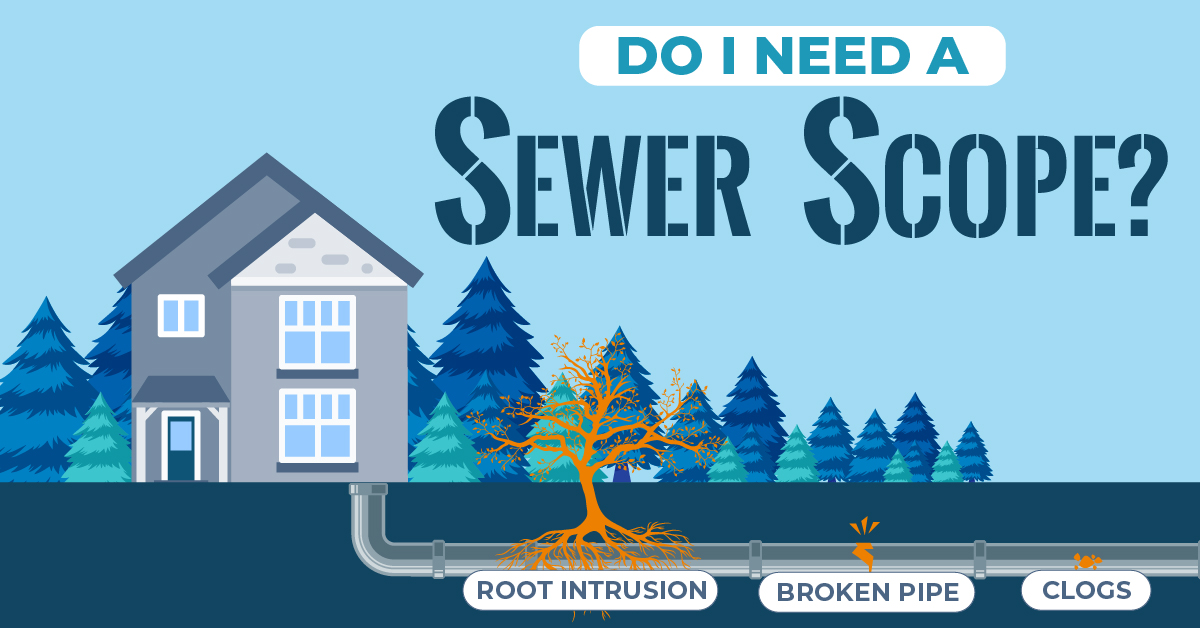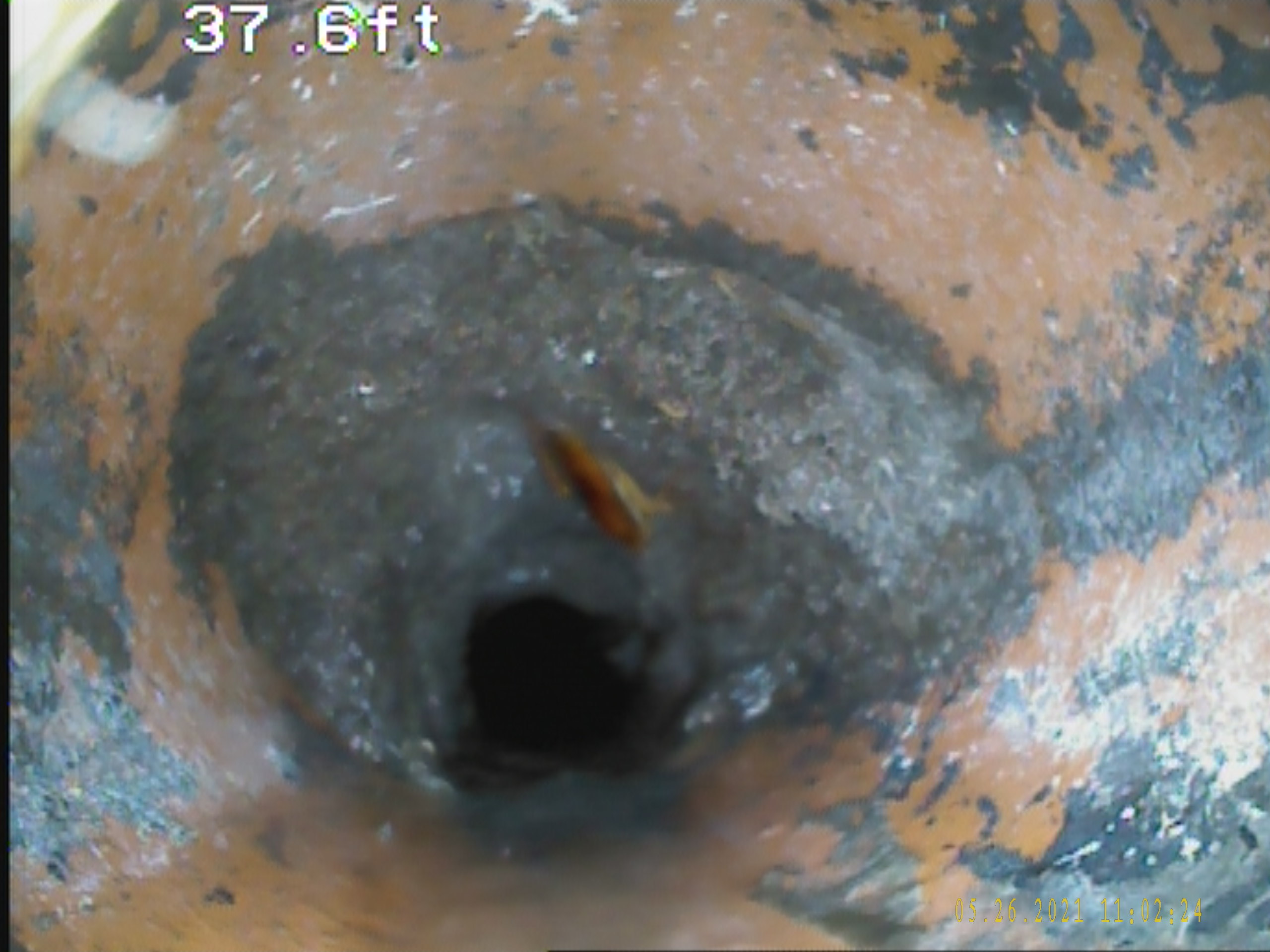Homeownership comes with so many benefits, but it also takes work such as annual A/C system maintenance. As with most HVAC systems in Southern California homes, you most likely have a split system consisting of an outdoor unit and an inside unit. The exterior unit has an array of tiny coils like a car’s radiator and a compressor underneath a protective cover. The interior side of the system contains another set of small coils called the evaporator coil and the blower motor.
Contrary to popular belief, air conditioning systems don’t actually produce cold air. Instead, they remove heat and moisture from the air and then distribute that now-cooler, drier air throughout the home through distribution ducts. The heat is carried outside by refrigerant through the “line set” to the exterior condenser coils, where the heat radiates into the atmosphere.
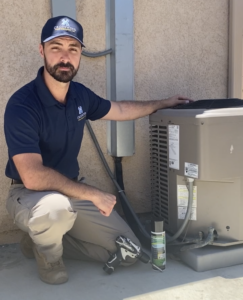
A/C system maintenance
A/C system maintenance and cleaning are required to keep everything running efficiently and safely. Having dirty and clogged coils can contribute up to a 30% energy efficiency loss, costing you money all summer long by making your air conditioning system work harder than it should. Some A/C system maintenance should be left to the pros, such as duct cleaning and servicing of the evaporator coils in the interior unit. However, you can accomplish some routine maintenance such as filter replacement and exterior condenser coil cleaning. The coils outside of the house should be cleaned at least once every year, preferably before the summer season.
How to clean your condenser coil unit
There are some basic tools and supplies that you need to clean your coils, such as basic hand tools like a screwdriver or a socket set (it will depend on your individual unit), a can of coil cleaner, and a garden hose.
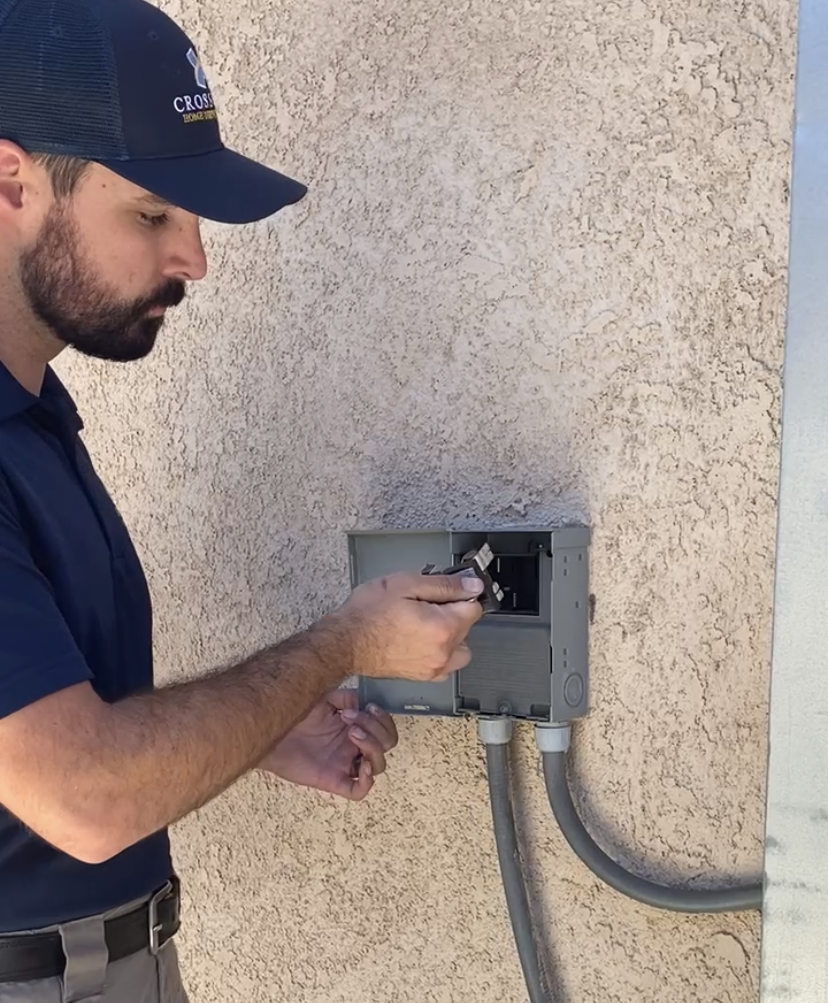
Safety first
Most importantly, it would be best if you work safely. Adjacent to the A/C unit is a little box with a conduit connected to it- this is your service disconnect. The service disconnect acts as a circuit protection device and a safety disconnect to protect those working on the system. With the air conditioner not running, open the cover and pull out the disconnect. Pulling the disconnect will make sure the air conditioning system does not start running while you have it opened up.
Remove the condenser cover and flip the motor out of the way.
Next, grab your hand tools and remove the fasteners that are securing the top cover and motor. Remember to put the fasteners in a safe place so you don’t lose them, and gently lift the cover and motor up and out of the way. This is how you will gain access to the condenser coils for cleaning. Be sure not to put any stress on the electrical wires attached to the motor when you set it aside.
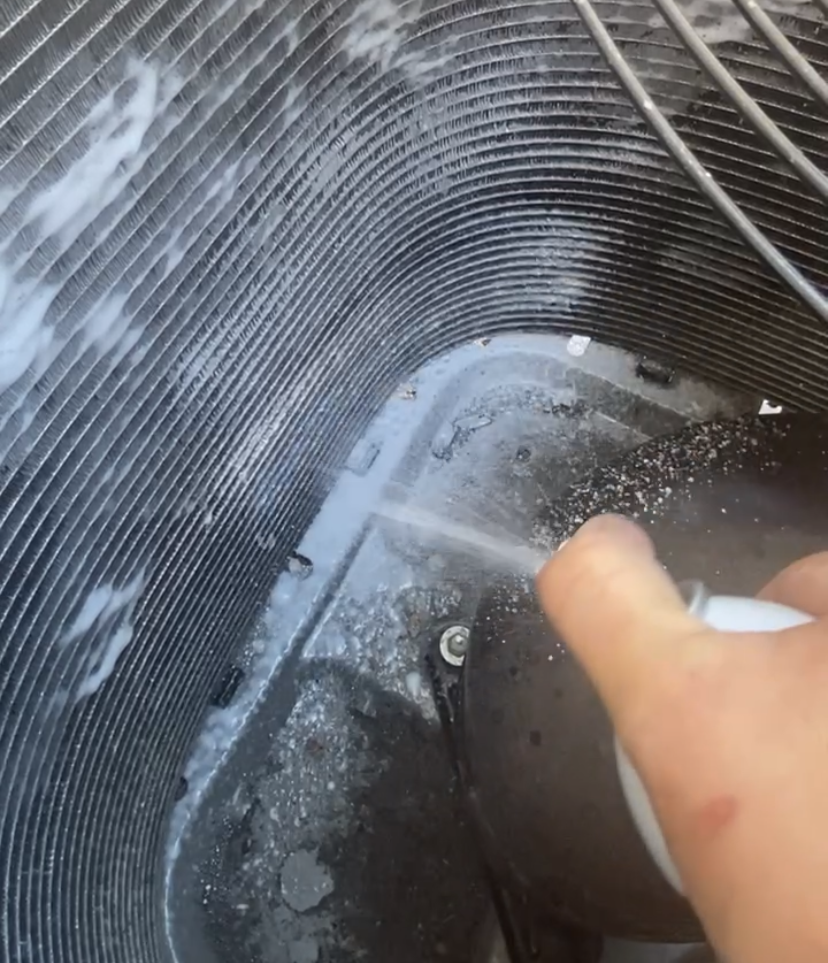
Use the coil cleaner and a garden hose to wash away built-up debris
Take a look at the inside and gently remove any large debris like leaves collected at the bottom. Be careful not to bend the tiny fins of the coils as they are very delicate and easily damaged. Grab your can of coil cleaner and thoroughly spray the inside surfaces of the coils; go ahead and use the whole can. The coil cleaner is specially formulated to gently lift and dissolve any built-up dirt deposits without damaging the coils. After about 20 minutes of soaking, gently flush the cleaning solution through the coils with a garden hose; do not use a high-pressure stream, remember the fins are delicate, and we want to flush the dirt away gently.
Reassemble the unit by putting everything back together in the reverse order in which you took it apart. Flip the fan and motor assembly back over, set it in its place, and install and tighten the screws or bolts that hold the cover in place. Next, reinstall the service disconnect fuses and close the cover. Lastly, go inside to the thermostat and turn on the air conditioning system to make sure everything functions properly. Congrats! You have now singlehandedly improved the efficiency of your air-conditioning system!

